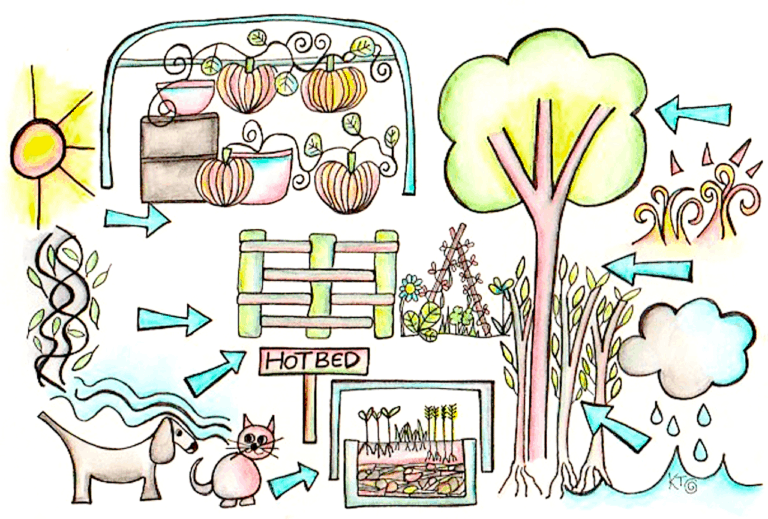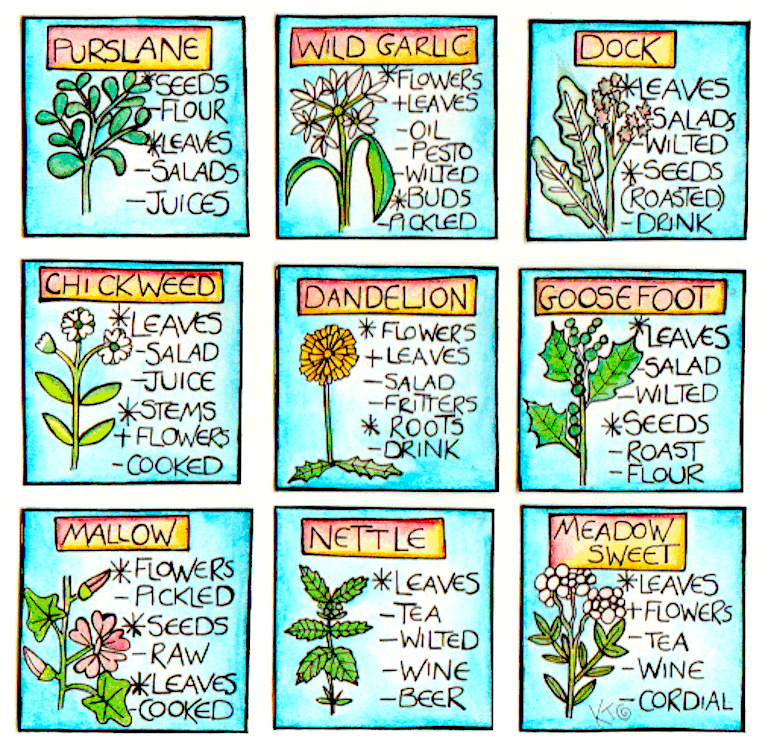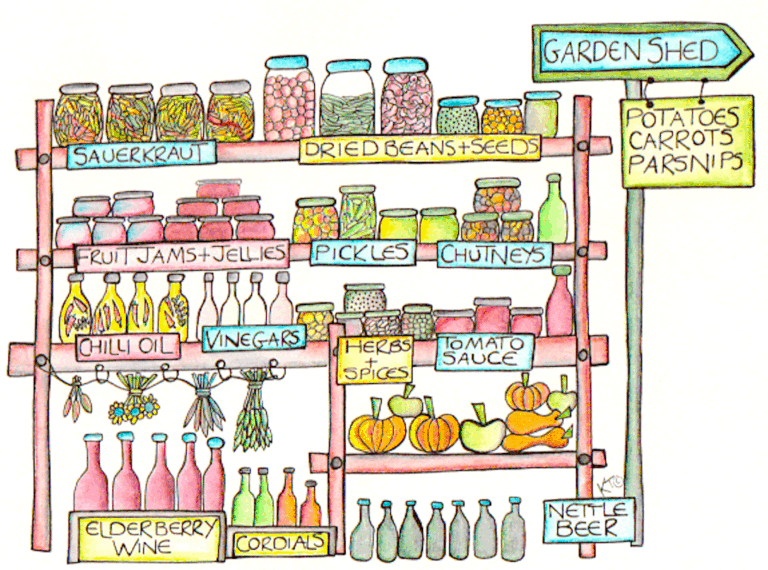This article will teach you everything you need to know about how to grow your permaculture kitchen garden, in any climate, with almost no work.
Just kidding! Growing food takes time, patience, and a willingness to learn how to adapt what you learn to suit your climate and microclimates. In this regard, there is NO BETTER source of information than your local elders when it comes to how to grow food in your local area. Find them, help them, and learn from them. Meanwhile, here are some resources to get you started!
The kitchen garden is a major hub in your home system
Growing food is one of the funnest parts of permaculture!
Some folks call this a potager garden, and it’s all about putting food on the table. But this can be easier said than done, and it makes a lot of sense to apply the same careful and deliberate design process to your veg patch as you do to the whole system.
The first thing you need to remember is that ALL of the stuff we have learned in this course so far can be applied to designing your vegetable garden. Gardening is only a small part of permaculture, but the food garden will inevitably be the nexus of your project, and all of the theories and tools we’ve been studying (zones, sectors, cyclic opportunity, scale of permanence, etc) apply.
In fact, the permaculture kitchen garden is a great place to start testing and practicing those theories, so that you can better understand and conceptualize them for your whole-system design.
Types of garden beds most commonly used in permaculture designs
Many of us grow the bulk of our vegetables within an integrated, multi-layer food forest that also contains trees, shrubs, vines, soil-building projects, and animals. Some folks, depending on their circumstances, prefer to have an area designated for full-sun, annual and biennial vegetables. Either way, plants need a garden bed to grow in, and there are many styles to choose from.
Which is the best style of kitchen garden bed?
You’ll need to decide that for yourself, based on your site and situation!
This chart will help you figure out which types of garden beds to use in your space.
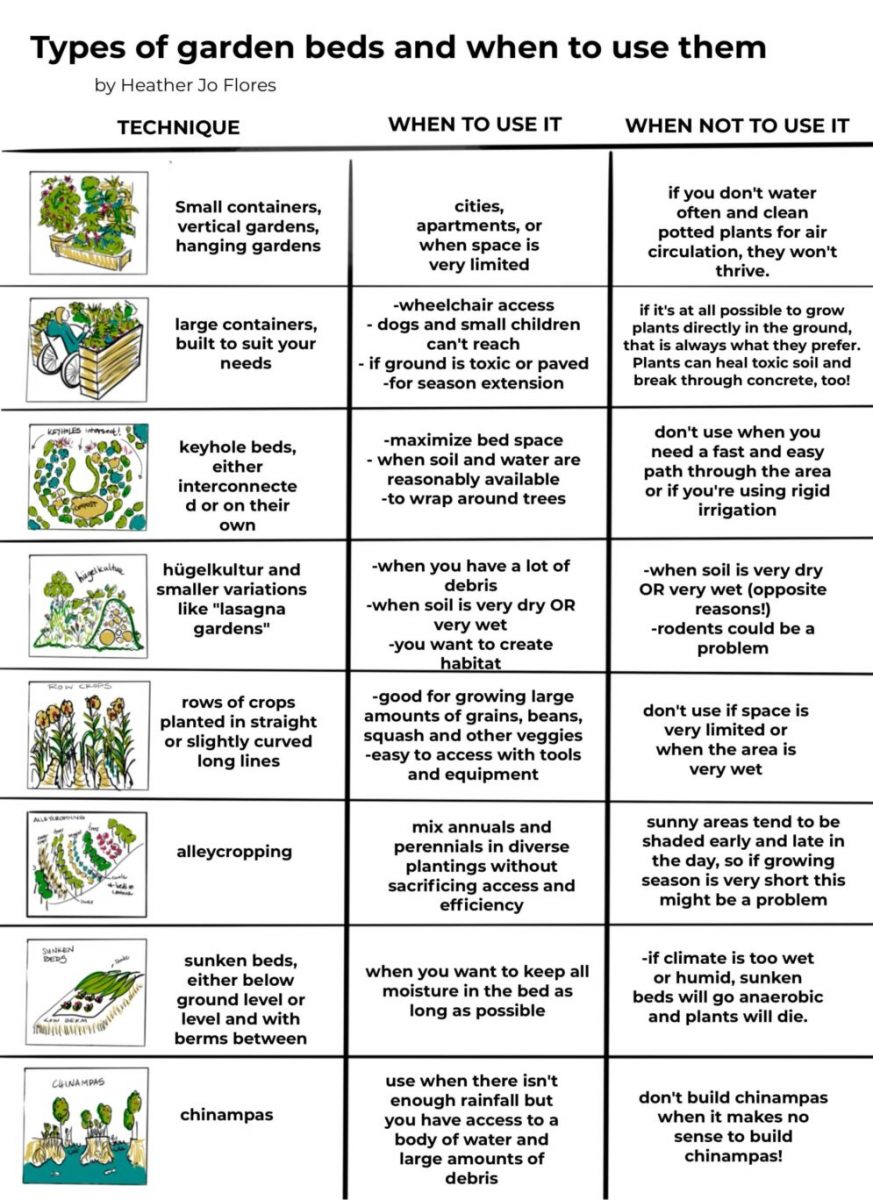
SO many amazing resources for permaculture vegetable gardening!
It would be a disservice to you, students, for us to pretend like we’re the end-all be-all of vegetable growing expertise. There are so many amazing people out there, sharing super-valuable information on this topic. As such, we’ll focus on a handful of videos from a variety of situations, but don’t stop there! Cultivate a hunger for knowledge that rivals your hunger for fresh organic food, and you’ll live a long, happy life.
Here’s a raised-bed permaculture kitchen garden.
Here’s a unique approach to no-dig gardening
This is a super-inspiring story about a lush urban food garden project
And here’s a large-site permaculture example that’s simply wonderful
Companion Planting
An oldie but a goodie! Click here for the printable version of this handy companion-planting chart, which is just one of many awesome resources from the Afristar Foundation.
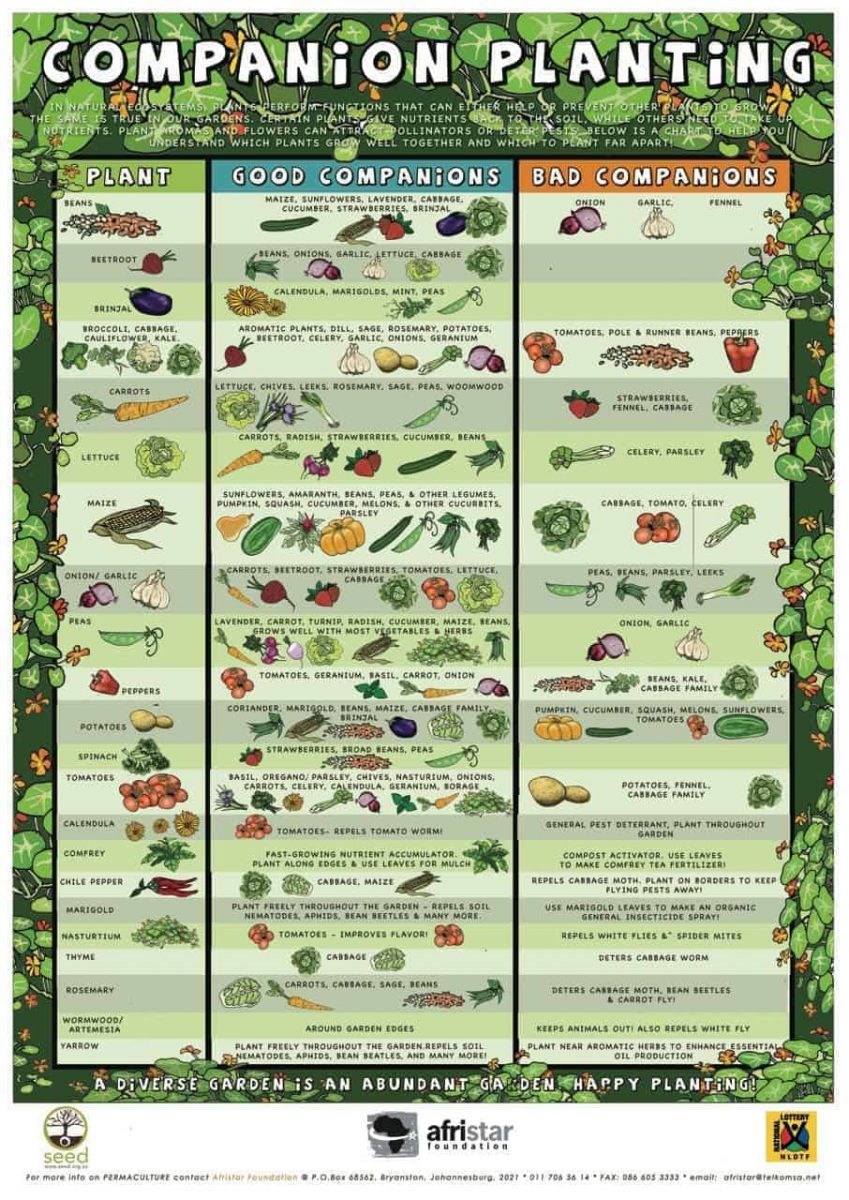
Want to learn more about this and other topics related to permaculture, sustainability, and whole-systems design? We offer a range of FREE (donations optional) online courses!
More Links and Resources
Growing veggies from kitchen scraps!
Did you know you can grow new veggies using tiny parts that you’d normally throw in the compost? Heres how:
Thompson & Morgan not only offers a huge selection of seeds, they also have a super informative website that offers a lot of great resources for beginner gardeners.
This article offers a list of veggies that are especially easy to grow.

Sowing Calendar
Designed for people in the Northern Hemisphere, so if you live down under you’ll need to flip the months, but this free chart from When2Plant is awesome! (Click to get the PDF)

While buying seedlings from a local nursery can certainly save time, it can be expensive to do your whole garden that way, and you also miss out on the vast diversity available when you grow from seed. This article, on the ever-useful Old Farmer’s Almanac site, focuses on veggies that are easy to grow from seed.



